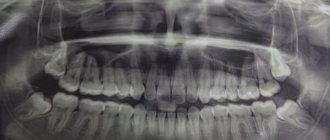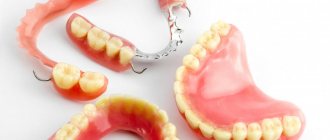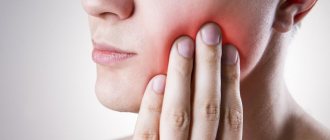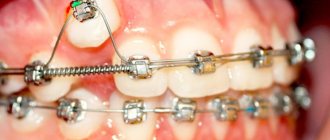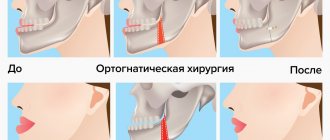Is it possible to smoke after treatment and filling of a tooth? Recommendations for different cases
Smoking is a harmful habit that is quite difficult to get rid of. Cigarettes, and especially the substances they contain, have a negative effect on the body as a whole. The vessels narrow, the cells receive little oxygen and nutrients. But the first place nicotine encounters is the oral cavity. All substances begin to be absorbed into the mucous membrane and also affect the tooth enamel. You can harm yourself even more if you start smoking immediately after filling a tooth. Below we will look in more detail at whether it is possible to smoke after filling and dental treatment.
Why do implants fail?
If smoking occurs after implantation, the patient should be prepared for difficulties and adhere to oral hygiene, more about which you can read here. Structures may be rejected for the following reasons:
- Stone formation on metal pins;
- Acute inflammation of the mucous membrane and gums around the structure;
- Poor blood circulation at the implant site;
- Peri-implantitis;
- Implant mobility and loss.
The essence of the filling procedure
Filling is a specific method that helps restore the shape and function of a damaged tooth.
First of all, the dentist cleans the cavity of unnecessary substances, and then fills it with filling material.
Currently, technologies make it possible to reduce the likelihood of post-filling complications to zero. Dentists prefer to use gutta-percha-based materials. This is a special biological material that allows you to close any channel, regardless of its width and curvature. Preparing teeth for filling is carried out in the most usual way. The dentist performs mechanical expansion and frees the cavity from the affected tissue. This is followed by antiseptic treatment. The doctor uses disposable cellulose-based pins to accurately determine the length of the canal and then dry it.
What is recommended to do if anesthesia is planned and you smoke?
Before general anesthesia, the doctor must warn in advance that smoking is strictly prohibited the day before the operation. This is due to an increased concentration of nicotine and smoke in the lungs, which can negatively affect an ultrasound of the heart or x-ray of the lungs. If the doctor’s recommendations have not been followed, spasms in the larynx may occur during the operation. Subsequently, everything will result in respiratory arrest.
Also, under general anesthesia, an extremely unpleasant circumstance can occur - asystole (cardiac arrest).
This is due to the fact that a smoker's heart requires many times more oxygen than the heart of a non-smoker. While the operation is underway, under the influence of anesthesia, the pulse may increase significantly, arrhythmia may begin, and the heart may simply reject the drug.
One should not ignore the fact that the success of the operations directly depends on the patients themselves. In this case, if the patient said goodbye to a bad habit several months before surgery, the risk of developing post-anesthesia complications is significantly reduced. It should also be noted that if the patient smoked his last cigarette the day before anesthesia, terrible consequences can be avoided.
During surgery, patients with nicotine addiction need large doses of anesthetics and narcotic analgesics.
This is due to the body’s increased resistance to foreign substances. After anesthesia, many patients require oxygen support, as impaired lung function makes itself felt.
Many smokers very often did not listen to doctors who forbade them to smoke before surgery. All this was due to the fact that they simply did not understand the full picture of side effects and how this could affect health. Smoking before surgery with anesthesia, sadly, leads to bronchitis and pneumonia. In addition, it was noted that in patients who smoked before surgery, the wounds are more likely to fester and the suture area to become inflamed.
Considering the risk a smoker who does not want to fight nicotine addiction can expose himself to, all that remains is to advise him to choose epidural or local anesthesia.
What are the types of fillings and fillings?
Many patients are asked: “What fillings do you want to get?” And in order not to get into an awkward position, you need to understand what kind of fillings exist.
Keep in mind! In dentistry, they differ in composition and use:
- Plastic and ceramic. Plastic ones are the most popular because they are considered cheap and quick to install. Ceramic ones are harder and more reliable.
- Amalgam fillings. They contain silver, copper, zinc, mercury or tin. They are considered ductile, have high strength and can last for several years.
- Temporary and permanent. Temporary ones are used for long-term treatment, and permanent ones are used for instant treatment at a time.
Note! Modern medicine provides several types of materials for tooth filling.
Their main goal is to restore all processes. The material must be selected for the appropriate load:
- Filling of front teeth. Most often, teeth are destroyed due to caries in the front row. This procedure has its own indicators. To avoid future problems with chewing food, a specialist installs light-curing material.
- Filling using paste. Doctors quite often use pastes in their work. They are needed to seal the void after the inflamed pulp has been removed.
- Innovative filling. Such methods include canal sterilization, the use of hot or cold gutta-percha, mummification and retrograde filling.
What complications can arise on the operating table?
No complex surgical operation is performed without anesthesia; it is generally safe. However, if the patient smokes, he should think about the consequences of nicotine on the body:
- Strong effects on the nervous system and brain. Very often this leads to a weak response to prophylaxis carried out immediately before the operation itself. The pain threshold increases, which impairs the body's regeneration after surgery.
- Deterioration of the cardiovascular system. The threat in this case is represented by a zero reaction to anesthesia. A person can “fall” into sleep for only a few minutes, and then wake up. Also in some cases there is a violation of the respiratory tract.
- Respiratory system disorder. The task becomes especially difficult for the anesthesiologist. It is necessary to calculate the personal dose of oxygen, analgesics and other necessary substances. During the operation, breathing failures are possible, which can lead to asystole (circulatory arrest, during which contractions of different parts of the heart stop).
When can you smoke in different cases after treatment?
Stay up to date! Smoking affects tissue function and impairs regenerative function.
The recovery process is reduced, and a film with pathogenic microorganisms forms on the enamel. They cause secondary caries.
Now every second person turns to a dentist for help to have a tooth filled.
Smokers are not left out. Such people always have one question: “Can I smoke after filling a tooth and how long after can I light a cigarette?”
If the patient cannot resist this habit, then it is necessary to check with the doctor what material is used.
After cement filling
Cement-based material is cheap and short-lived.
For your information! It takes a very long time to harden and will not be able to prevent a new outbreak of caries. It is not recommended to smoke for about five hours.
Temporary plastic filling
Material prone to causing inflammation of the gums. In addition, it shrinks quickly and at the same time affects the shape and color of teeth during eating and smoking.
It is best to refrain from smoking for three hours, although in any case the fillings will lose their appearance.
Photopolymers (light fillings)
Photopolymer fillings are exposed to a special ultraviolet lamp to harden them.
Thanks to this treatment, you can eat and smoke immediately after rising from the dental chair.
Amalgam filling (metal filling)
You should know! This material is used very rarely, as it is toxic. Amalgam is made by mixing mercury and metal.
It is better to stop smoking after filling for a couple of hours to allow the tissues to recover.
Nicotine affects the degree of healing, so with any filling it is not recommended to smoke during the day.
Reasons for the threat of smoking before surgery
Many smokers very often do not listen to doctors who forbid them to smoke before surgery. All this is due to the fact that they simply do not have a complete picture of how this can affect health.
Scientists have long been engaged in such research as smoking and the effects of nicotine on the body before anesthesia (since the early 50s).
As statistics have shown, during an operation (usually surgical), patients had a number of serious complications.
Often it came to blood transfusions in large quantities. Surgeries to remove a brain tumor very often had such a sad result as death. The operations on the spine were also disastrous. The patient could take a long time to rehabilitate or stop walking altogether.
As neurosurgeons note, it is strictly forbidden to allow at least one cigarette to be smoked before surgery. This is especially important in complex procedures involving risk to life. Every patient must remember that his own life depends not only on the doctor, but also on himself. Of course, it is difficult to convince a smoker, for whom drinking cigarettes is a process of relieving stress, anxiety and calming the nervous system, of this, especially before surgery under general anesthesia.
What to do
At any given time of quitting smoking, a person will experience various symptoms. Conventionally, smokers are divided into three groups.
- Those who have changes in physiology have a nicotine addiction.
- When there are no changes in various systems of the body, the smoker only has a psychological dependence.
- If there are changes at the physiological and psychological levels, then this is complete dependence.
Depending on which group the smoker belongs to, the main manifestations of quitting smoking will be determined. Manifestations of smoking cessation will depend on the timing of the operation, the nature of the operation, the anesthesia performed and complications during the operation.
Useful video
From this video you will learn how the process of filling teeth occurs:
If you are planning to visit the dentist to have your tooth treated, you will have to forget about smoking for about a day. Each person’s body is individual , so the time for the material to harden may take longer.
It is also important to decide on the filling you want to install. After visiting the doctor , your teeth need rest. You will have to refrain from smoking and eating for a couple of hours.
Also, do not ignore the recommendations of a specialist so that the restored teeth can last for decades.
Today, despite modern advances in dentistry, smoking and dental implantation in dentistry remain a big question. This is due not only to the negative impact of this addiction on the body, but also to the constant harmful effects of cigarette smoke on tooth enamel and oral mucosa.
The effect of nicotine on tooth enamel
The negative impact of smoking on tooth enamel leads to the fact that implants do not take root well, and the mucous membrane injured after this dental intervention heals very slowly. The negative effects of cigarettes are as follows:
- Exposure to high temperatures from tobacco smoke.
- Thinning of bone tissue due to the influence of tar and nicotine on it.
- Decreased immunity.
- Formation of tartar and yellow plaque.
If you smoke frequently, exposure to high temperatures causes tooth enamel to become thinner over time, becoming brittle and brittle.
Thinning bone structure significantly increases the risk of implant failure and failure. Decreased immunity leads to frequent inflammatory diseases of the oral cavity, including osteomyelitis, which is a common companion for people with a long history of smoking. This makes it almost impossible to place a high-quality implant.
Tartar and dense plaque, which occur if you smoke frequently, are an excellent breeding ground for bacteria, which, in turn, negatively affect the condition of the skeletal system and soft tissues of the oral cavity.
Additional Information
Cigarettes are the culprit of many diseases, including dental ones. Toxic compounds negatively affect the condition of the dentition.
Smoking leads to cracks, yellowing of the enamel, the formation of caries, and also reduces the local immunity of the oral cavity and can cause stomatitis in a smoker or cause discomfort on the tongue.
When can I smoke after having a temporary filling installed?
Temporary filling protects exposed nerves and saves the tooth from subsequent destruction. You can smoke immediately with a temporary filling .
After all, after a week, the temporary material will be replaced with permanent one.
The main thing is to rinse your mouth thoroughly after each cigarette you smoke . You can use special tools.
When can I smoke after having a permanent filling installed?
Remember! To maintain oral health, it is necessary to completely abandon this harmful habit.
If a smoker has permanent fillings installed, then you can return to cigarettes 5-6 hours after the procedure.
Biotransformation of xenobiotics
All foreign substances that enter the respiratory tract or gastrointestinal tract, including medications and food components (xenobiotics), are metabolized by enzymes. They are located mainly in the liver and make the substances described above more water soluble. Such enzymes are divided into Phase 1 and Phase 2 enzymes. Phase 1 enzymes are cytochrome P450 enzymes that convert these substances into water-soluble substances. Cytochrome P450 isoenzymes (CYP) are a family of hemoproteins that are the terminal oxidases of the mixed oxidase system on the membrane of the endoplasmic reticulum.
The present nomenclature system for the various CYP isoenzymes is a three-level classification. The number and capital letter indicate the order of the amino acids, and the last number indicates the individual enzyme, such as CYP3A4. Letters in italics indicate the gene that codes for the enzyme. More than 270 CYP families have been identified in the animal kingdom. In humans, there are 43 subfamilies and 57 individual enzymes, each of which is encoded by its own gene.
The multienzyme system of cytochrome P450 is regarded as an adaptive response to the influence of toxic and non-toxic substances, leading to the development of a specific reaction to a specific toxin. In most cases this is a beneficial reaction, but it can lead to the formation of a pharmacologically active and even carcinogenic substance.
In humans, there are about 30 CYP enzymes responsible for drug metabolism. They belong to families 1-4. It has been estimated that 90% of drug oxidation is provided by 6 main enzymes: CYP 1A2, 2C9, 2C19, AD6, 2E1, 3A4. CYP3A4 is found not only in the liver, but also in the intestinal wall, which provides primary protection. Drugs that act on the central nervous system, with the exception of volatile drugs, are metabolized by these enzymes. Cigarette smoke affects CYP1A1, CYP1A2, CYP2E1.
The CYP1A family consists of two enzymes - 1A1 and 1A2. CYP1A1 is not fully produced by the liver. It is also found in the lungs, mammary glands, placenta and lymphocytes. It inactivates procarcinogens and is stimulated by PAHs. There is an association between CYP1A1 activity and the risk of developing lung cancer.
The process of water dissolution of inhaled xenobiotics continues in phase II of metabolism. This process combines coupling reactions that occur in the cytosol of cells (the part of the cytoplasm outside the organelles). Although phase I is thought to precede phase II, this does not always occur. Phase II reactions can precede phase I if they involve diametrically opposed substrates. The coupling of polar moieties occurs through a series of reactions that include sulfotransferases (SULT), N-acetyltransferases (NAT-1/2), methyltransferases such as thiopurine methyltransferase (TPMT), glutathione transferase (GST), and most commonly, glucuronasyltransferases.
